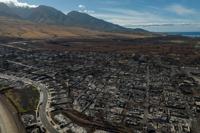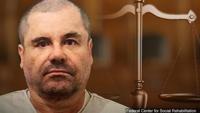CHICAGO, Ill. -- Gov. JB Pritzker signed the Fiscal Year 2024 budget into law on Wednesday, delivering the fifth balanced budget, his office said.
The FY24 budget makes transformative investments in early childhood, K-12 schools, workforce and economic development and efforts to fight violence and poverty.
Pritzker's office also said the budget prioritizes fiscal responsibility, with contributing an additional $200 million to the state's pension systems beyond what is required and continues to pay down outstanding state debts. It also makes ongoing contributions to the state's Budget Stabilization Fund which is set to surpass $2 billion.
“From the beginning, I promised to work together with the General Assembly to restore fiscal responsibility to our state government after years of mismanagement,� said Governor JB Pritzker. “Thanks to our firmer fiscal foundation, we have been able to put billions of dollars back into the pockets of Illinois taxpayers while investing in our future. Our budgets have allowed thousands more students to stay in Illinois because they can afford a college degree. Balanced budgets have allowed us to modernize our infrastructure, build nation-leading clean energy production, attract industries of the future like quantum computing, and prioritize childcare for working families and our youngest children.�
“Today is a historic day in Illinois, and I’m so proud of the work we’ve accomplished for the Fiscal Year 2024 budget that will build on our commitment to empower communities to be healthy and safe in Illinois. This fiscally responsible budget is making our transformation efforts a reality, prioritizing our children, our young people who wish to pursue a higher education by making college affordable, all while investing in safety in our communities,� said Lt. Governor Juliana Stratton. “I thank Governor JB Pritzker, and members of the General Assembly for their work in our fifth budget that will uplift and invest in all our Illinois residents.�
“Passing this budget was an exercise in trust, working together to prioritize paying down debt, shoring up our Rainy Day Fund and ensuring a durable, balanced budget,� said Senate President Don Harmon (D-Oak Park). “I want to thank Governor Pritzker for his commitment to responsible budgeting. I also want to thank Speaker Welch for his partnership and the incredible Senate budget negotiators for their hard work. The future looks bright for Illinois.�
“With this budget we're building a stronger economy and putting our state back on sound fiscal footing, while also making smart investments in priorities like education, healthcare, and local communities,� said House Speaker Emanuel “Chris� Welch (D-Hillside). "I want to thank Governor Pritzker and Senate President Don Harmon for their commitment to getting this right. I also want to thank my Chief Budgeteer Jehan Gordon-Booth, the House Appropriations Chairs, and Budget Negotiation Team for the hard work that went into crafting a budget that expands opportunity and creates a brighter future for Illinois.�
“The budget signed today builds upon our strong, smart spending decisions of recent years that have led Illinois to not just one credit upgrade � but eight. I am proud of the steps we took to continue Illinois on the right path,� said State Senator Elgie R. Sims, Jr. � the Senate’s Appropriations Leader (D-Chicago). “We didn’t just look at fiscal outcomes but prioritized our most vulnerable populations, educating our young people, keeping our communities safe, creating good jobs, and growing our economy. Continuing our principled and disciplined approach will keep our fiscal house in order. I am committed to doing the work necessary to ensure that Illinois continues to enact responsible budgets and remains on the path toward fiscal stability, investing in and uplifting marginalized people, all while prioritizing our communities and people who need the most assistance.�
“This state budget is balanced in every sense. It is a fiscally and socially responsible plan that will direct needed resources to our classrooms, public safety efforts and essential services that families depend on,� said House Chief Budgeteer Jehan Gordon-Booth (D-Peoria). “We’re rebuilding Illinois� fiscal house, while responsibly saving for the future and creating greater flexibility to address the challenges of tomorrow. This balanced plan delivers critical funding that ensures every student has access to a quality education, helps more people access the health care they deserve and invests in career and technical training to prepare our young people for high-wage jobs across Illinois. I am appreciative of the months of negotiation and hard work from both sides of the aisle to develop this responsible and compassionate plan, and look forward to the strong, positive impact it will have on uplifting families across our state.�
State leaders in southern Illinois opposed the budget. State Representative Patrick Windhorst said he voted against the budget the governor signed into law.
"The FY 24 budget spends $50.4 billion dollars, which is a record. Included in that funding is money for pay raises for lawmakers, hundreds of millions of dollars in funding for free Medicaid healthcare coverage for undocumented immigrants, and increased funding for taxpayer-funded abortions," Windhorst said in a statement. "Furthermore, the process that produced this budget was reminiscent of past years. A massive spending plan was dropped on legislators' desks with inadequate time for review, with little time for the public to review it and provide input, and was passed through the House of Representatives on the last day of Session after midnight. Those facts notwithstanding, the budget was also a take-it-or-leave-it spending plan that came as a result of Democrats shutting Republicans completely out of negotiations, which disenfranchises my constituents and the four million Illinoisans represented by the Republican caucus."
State Representative Paul Jacobs said the budget raises taxes and lacks transparency.
"I voted against this budget for several reasons. Democrats say the budget is balanced, but they got there by allowing for increased taxes on gas, groceries, and medicine. Illinoisans will also pay higher fees to access state services because of how this budget is drafted," Jacobs said. "Furthermore, the process that delivered this budget was, unfortunately, more of the same kind of backroom, last-minute, dark-of-night politics that bring our state shame annually. A $ 50-plus billion budget should be vetted in the light of day with plenty of time for the public and legislators to review it. That was not the case in this budget. The Governor's signature on this budget affirms that he is OK with a process that does not include appropriate public review and input and that he supports reinstating taxes on food, medicine, and gas."
Jacobs continued, "We can do better, and we must do better if we are to restore the faith of the people of Illinois in their state government."
House Minority Leader Tony McCombie also opposed and responded to the budget signing.
“Today Governor JB Pritzker signed one of the largest spending plans in our state's history. An unbalanced budget that shortchanges many, but particularly our hospitals and direct support persons (DSP workers) who serve our most vulnerable citizens. It is another budget filled with broken promises, accounting gimmicks, and a lack of structural reforms to address the systemic outmigration of Illinois families. House Republicans voted no in order to stand up for the residents of the 102 counties we represent. This budget puts the state's fiscal outcome at risk and all but guarantees future tax hikes.,� McCombie said.
Senate Republican Leader John Curran released a statement following the Governor's signing as well.
“We negotiated in good faith, and as a result, there are some joint priorities in this budget, specifically to support the developmentally disabled and invest in education," Curran stated. “Unfortunately, these positives pale in comparison to the Governor’s insistence on Illinois being the only state in the nation to provide no-strings-attached health care for non-citizens at a cost of $1.1 billion. The budget assumes the Governor will slash the cost of the program in half and provide no raises in A.F.S.C.M.E contract negotiations, among other gimmicks, in order to appear balanced on paper. This is simply not true."
“The Governor’s choice to pay for this entirely state-funded free health care program for undocumented people over any meaningful investment in our business community highlights the stark contrast between our priorities," Curran continued in the statement. “From energy rate and property tax relief to the full phase-out of the franchise tax that was already promised and taken away by Gov. Pritzker, Senate Republican initiatives for growing jobs and job creators were ignored in favor of more social spending. It is alarming to me, and job creators everywhere, that the largest budget in Illinois history does not even attempt to improve our business climate at a time when so many people are leaving our state.�
The following information is the budget highlights for Fiscal Year 2024 by Pritzker's office.
OVERVIEW
The Fiscal Year 2024 General Funds budget plan reflects projected revenues of $50.611 billion and expenditures of $50.428 billion, resulting in a $183 million surplus.
Highlights from the budget package include:
Commitment to Fiscal Responsibility â€� 5thÌýbalanced budget
The Fiscal Year 2024 budget framework builds upon four years of historic fiscal progress with a commitment to balanced budgets,ÌýeightÌýcredit rating upgrades, a Rainy Day Fund set to surpassÌý$2 billion, the elimination of the bill backlog, andÌý$1 trillionÌýin GDP.Ìý This year’s investments include:
- ·ÌýÌýÌýÌýÌýÌýÌý$200 millionÌýadditional pension payment beyond what’s required, bringing total pension stabilization investments toÌý$700 million
- ·ÌýÌýÌýÌýÌýÌýÌý$450 millionÌýto pay off Railsplitter Authority bonded debt â€� saving the state up toÌý$60 millionÌýin interest
- ·ÌýÌýÌýÌýÌýÌýÌýAn enacted plan to address the long-term structural deficit in the Community College Insurance Program (CIP), a health insurance program for retired community college employees
- ·ÌýÌýÌýÌýÌýÌýÌý$85 millionÌýin additional funding to communities through the Local Government Distributive Fund with an increase in the state’s revenue sharing formula.
Early Childhood Education and Childcare Funding
A highlight of the budget isÌý$250 millionÌýto fund the first year of Smart Start Illinois, the Governor’s early childhood initiative to eliminate preschool deserts, stabilize the childcare workforce, and expand the Early Intervention and Home Visiting programs.Ìý
This multi-year program provides a comprehensive approach to investments in preparing children to be lifelong learners. Year one targeted investments include the following:
- An additionalÌý$75 millionÌýfor the Early Childhood Block Grant at the Illinois State Board of Education to increase preschool availability while improving the quality of education. This funding is the first step in working to eliminate “preschool desertsâ€� by December 2027 through adding more than 20,000 slots for preschool aged children and the ability to serve thousands more infants and toddlers through the Prevention Initiative. This brings funding for the Early Childhood Block Grant program to nearly $673 million, $179 million more than when Governor Pritzker took office.
- ±õ²Ô±¹±ð²õ³Ù²õÌý$130 millionÌýand additional federal dollars to begin funding for Early Childhood Workforce Compensation Contracts to stabilize operational funding and promote quality in the childcare system. The proposed development of the contract funding model stems from recommendations made by the Early Childhood Funding Commission.
- Invests an additionalÌý$40 millionÌýfor Early Intervention programs to provide funds for an expected increase in participants and a 10 percent rate increase for providers.
- $5 millionÌýto expand DHSâ€� Home Visiting Program.
Additional early childhood investments to support the plan include the following:
- ·ÌýÌýÌýÌýÌýÌýÌý$70 millionÌýto cover an expected increase in Childcare Assistance Program (CCAP) participation and annualize rate increases from Fiscal Year 2023.
- ·ÌýÌýÌýÌýÌýÌýÌý$20 millionÌýto begin upgrading the child care payment management system.
- ·ÌýÌýÌýÌýÌýÌýÌýFederal funding for Early Childhood Access Consortium for Equity (ECACE) Scholarships for tuition, fees and other costs of attendance.
- ·ÌýÌýÌýÌýÌýÌýÌý$1.6 millionÌýto launch Dolly Parton’s Imagination Library statewide, an initiative that allows families to register their children to receive free, high-quality books in the mail from birth to age five no matter the family’s income.
K-12 Education
- $350 millionÌýincrease for K-12 evidence-based funding (EBF) formula. ISBE uses the tiered formula to distribute state funding based on need.ÌýThis investment brings the total annual EBF program toÌý$8.279 billion, or aÌý$1.443 billionÌýincrease in annual base funding during the Pritzker administration. In total, schools will have received an additionalÌý$4.0 billionÌýin EBF funds over five years.
- $45 millionÌýfor the first year of a three-year pilot to fill teacher vacancies, plus additional investments in scholarships for future teachers.ÌýThe funding will be allocated to the State’s school districts which experience some of the most significant hurdles to attract and retain teachers.
- $3 millionÌýfor computer science education investments to expand grants to school districts and professional development opportunities for teachers while promoting equitable access to coursework.
Higher Education
The Fiscal Year 2024 budget continues to make college more affordable with historic increases in funding for public universities, community colleges and financial aid.
- ·ÌýÌýÌýÌýÌýÌýÌý$100 millionÌýincrease toÌý$701 millionÌýfor Monetary Assistance Program (MAP) grant funding, so that virtually everyone at or below the median income can go to community college for free. This funding is the latest step in a 75 percent increase for MAP since 2019.
- ·ÌýÌýÌýÌýÌýÌýÌý$100 millionÌýincrease in operating funds for public universitiesÌý($80.5 million)Ìýand community collegesÌý($19.4 million)Ìýâ€� the highest increases in more than two decades
- ·ÌýÌýÌýÌýÌýÌýÌýIncreases funding for AIM HIGH merit-based scholarships byÌý$15 millionÌýto a total ofÌý$50 million.ÌýÌýHB301 will make the program permanent.
- ·ÌýÌýÌýÌýÌýÌýÌýIncludes new funding to support community college investments, including:
´ÇÌýÌýÌý$8.3 millionÌýfor dual-credit and non-credit workforce grant programs;
´ÇÌýÌýÌý$11 millionÌýfor curriculum development related to advanced manufacturing, electric vehicle and data center workforce training programs;
´ÇÌýÌýÌý$2 millionÌýfor technology upgrades for digital instruction in WIOA Title II Adult Education programs; and
´ÇÌýÌýÌý$750,000Ìýto expand English language services to non-English speaking communities.
- An additionalÌý$3.8 millionÌýfor the Minority Teacher Scholarship program
- ·ÌýÌýÌýÌýÌýÌýÌýContinues funding ofÌý$25 millionÌýfor the Pipeline for the Advancement of the Healthcare (PATH) Workforce Program, to train new nurses, medical assistants, medical laboratory technicians, emergency medical technicians and other high-demand positions.
- Additional funds for the Diversifying Higher Education Faculty in Illinois (DFI) program to provide holistic supports for fellows, beyond their stipend. This would include a new orientation program, conference attendance, and a graduate symposium to help them prepare for and find employment in Illinois.
- ±õ²Ô³¦±ô³Ü»å±ð²õÌý$3 millionÌýfor the Department of Public Health (DPH) to implement the Equity and Representation in Health Care Workforce Repayment Program and Scholarship Program per PA 102-0942.
Health and Human Services
- Nearly $75 millionÌýincrease for DCFS to hire 192 staff, expand training and protection, increase scholarships for youth in care, and improve facilities
- More thanÌý$500 millionÌýin new state and federal funds to support the state’s healthcare system
- Approximately $240 million increaseÌýto better serve Illinoisans with developmental disabilities
- $42.5 millionÌýfor grants toÌýcounties and cities for their costs associated with asylum seekers
- $22.8 millionÌýin funding to begin implementing the new Children’s Behavioral Health Transformation Initiative
- $18 millionÌýincrease to support reproductive health initiatives
- $24 millionÌýfor a rate increase for home workers who assist the elderly, increased outreach to the elderly, and an increase for Adult Day Services
- $10 millionÌýfor a state-based health insurance marketplace to help expand healthcare access
- $1.2 millionÌýfor a division of healthcare access at the Department of Insurance
- $53.5 millionÌýto overhaul IDPH’s disease monitoring IT systems and prepare for future public health emergencies
- $35 millionÌýincrease for TANF to address an increase in caseload, make inflation adjustments and increase eligibility from 30 percent to 35 percent of the federal poverty levelÌý$41 millionÌýfor youth employment and summer job programs
Addressing Homelessness
Home IllinoisÌýisÌýa multi-agency effort to support homeless prevention,Ìýprovide affordable housing,Ìý support crisis response, expand housing support and increase the number of staff focused on assisting people experiencing homelessness.ÌýHoused at the Illinois Department of Human Services, Home Illinois involves many state agencies and partners including the Illinois Housing Development Authority, the Department of Healthcare and Family Services, the Illinois Department of Corrections, and the Illinois Department of Commerce and Economic Opportunity.Ìý The budget includes anÌý$85 millionÌýincrease, bringing state funding to overÌý$350 million, to support homelessness prevention.
The funds in support of this work include:
- More than $118 million to support unhoused populations seeking shelter and services, including $40.7 million in the Emergency and Transitional Housing Program.
- $50 million in Rapid ReHousing services for 2,000 households, including short-term rental assistance and targeted support for up to two years.
- $40 million in Permanent Supportive Housing (PSH) Capital funds to develop more than 90 new PSH units providing long term rental assistance and case management.
- $37 million in Emergency Shelter capital funds to create more than 460 non-congregate shelter units.
- More than $35 million for supportive housing services homeless youth services, street outreach, medical respite, re-entry services, access to counsel and other shelter diversion supports
- $30 million for court-based rental assistance.
- $21.8 million to provide homelessness prevention services to 6,000 more families.
- $15 million to fund Home Illinois Innovations Pilots
- $12.5 million to create 500 new scattered site PSH units.
Public Safety and Violence Prevention
- Continues the multi-year commitment ofÌý$250 millionÌýfor theÌýReimagine Public Safety Act to prevent gun violence and expanded funding for youth employment programs
- ±õ²Ô³¦±ô³Ü»å±ð²õÌý$200 millionÌýfor the Restore, Reinvest, and Renew (R3) grant program, a $75 million increase
- ±õ²Ô³¦±ô³Ü»å±ð²õÌý$40 million -- $20 millionÌýeachÌý-- in funding for the Office of the State Appellate Defender and the Office of the State’s Attorney Appellate Prosecutor to carry out responsibilities under the new Pre-trial Services Act.
- ProvidesÌý$16.1 millionÌýto support two cadet classes to hire and train 200 additional sworn troopers to address the rising need for officers throughout the State, bringing the total number of officers to 1,800.
- Includes operational and administrative support funding for the new seven-member Firearm Owner’s Identification Card Review Board, created by PA 102-0237, which reviews appeals from card applicants.
- Includes more thanÌý$2.1 millionÌýfor Safe2Help Illinois, a 24/7 program where students can share information on safety issues in a confidential environment.
- Provides an additionalÌý$18 millionÌýfunding round for the Illinois Nonprofit Security Grant Program per PA 100-0508, which will provide grants and support to organizations throughout the State for security improvements that assist in preventing, preparing for or responding to acts of terrorism
- ±õ²Ô³¦±ô³Ü»å±ð²õÌý$30 millionÌýfor the Law Enforcement Camera Grant Program to provide reimbursement to local law enforcement agencies for in-car cameras, body cameras and data storage.
- ±õ²Ô³¦±ô³Ü»å±ð²õÌý$10 millionÌýfor the Law Enforcement Recruitment and Retention Fund to provide resources to local law enforcement agencies for recruitment of new officers, retention plans, mental health care for officers, safety equipment and training, and improvement in local jails.
- ±õ²Ô³¦±ô³Ü»å±ð²õÌý$2.5 millionÌýfor the Illinois Terrorism Task Force Gaps Report to establish a baseline for public safety response capabilities
- Continues the Department of Juvenile Justice’s 21stÌýCentury Transformation Plan that includes operational costs for its new facility in Lincoln, scheduled for opening in late Fiscal Year 2024.
- ±õ²Ô³¦±ô³Ü»å±ð²õÌý$13 millionÌýin funding for the Adult Redeploy Program, an increase of $1 million to allow for continued program expansion.
Government Services
- $16.5 millionÌýfor a multi-year initiative to modernize the state’s professional licensing system at the Department of Financial and Professional Regulation and additional funds for a call center to assist in the transition.
- $32.5 millionÌýto the Secretary of State to implement the REAL ID program
- Over $75 millionÌýfor the Secretary of State to begin to modernize the office’s computer systems
Economic and Community Development
- ·ÌýÌýÌýÌýÌýÌýÌý$400 millionÌýto close major economic development deals and attract businesses and jobs to the state
- ·ÌýÌýÌýÌýÌýÌýÌýExpanded workforce development programs to build a pipeline in the industries of the future, like data center, electric vehicles, and clean energy
- ·ÌýÌýÌýÌýÌýÌýÌý$20 millionÌýto the Department of Commerce and Economic Opportunity (DCEO) for Rebuild Illinois Downtowns and Main Streets Capital Program to provide additional community revitalization funding
- ·ÌýÌýÌýÌýÌýÌýÌý$40 millionÌýfor forgivable loans to launch more social equity cannabis businessesÌý
- ·ÌýÌýÌýÌýÌýÌýÌý$10 millionÌýto fund a “one-stop business portalâ€� to foster entrepreneurship
- ·ÌýÌýÌýÌýÌýÌýÌý$2 millionÌýfor a new Office of Rural Economic DevelopmentÌýintended to connect communities and improve access to state and federal aid through outreach or technical assistance from rural navigators.
- ·ÌýÌýÌýÌýÌýÌýÌý$2.5 millionÌýto establish an Office of Outdoor RecreationÌýto promote tourism at destinations around the State and grow the outdoor recreation economy of Illinois
- ·ÌýÌýÌýÌýÌýÌýÌý$10 millionÌýfor a Clean Energy Career and Technical Education Pilot ProgramÌýfor high schools
- ·ÌýÌýÌýÌýÌýÌýÌý$20 millionÌýto address food insecurity in urban and rural communities through incentivizing the opening of grocery stores and providing grants for equipment upgrades to existing small grocers through the Illinois Grocery Initiative
- ·ÌýÌýÌýÌýÌýÌýÌý±õ²Ô³¦±ô³Ü»å±ð²õÌý$30 millionÌýfor agriculture programs that improve the availability and accessibility of nutritious, locally sourced foods for Illinoisans in need, includingÌý$28 millionÌýfor a new federally funded Local Food Purchase Cooperative Agreement which will support local, regional and socially disadvantaged farmers and ranchers through the purchase of local foods for distribution to food banks, schools and organizations that reach underserved communities, andÌý$2 millionÌýfor middle supply-chain infrastructure grants through the federal Resilient Food Systems program.
- ·ÌýÌýÌýÌýÌýÌýÌý$20 millionÌýfor a Fast-Track Workforce Program intended to provide resources and support to major relocating or expanding employers for employee screening and recruitment, and customized job training development.
- ·ÌýÌýÌýÌýÌýÌýÌý$20 millionÌýto provide a state commitment and in-kind contribution to support Illinois entities seeking competitive federal awards that align with the State’s economic development plan
- ·ÌýÌýÌýÌýÌýÌýÌý$19 millionÌýin additional funding for advertising and promotion of tourism throughout Illinois, nearly doubling the State’s investment in domestic and international tourism promotion
- ·ÌýÌýÌýÌýÌýÌýÌý$30 millionÌýfor new one-time tourism promotion grants at DCEO to support the State’s tourism industry
- ·ÌýÌýÌýÌýÌýÌýÌý$90 millionÌýin new capital funding for DCEO’s Enterprise Fund Grant Program, which provides competitive funding to attract and retain businesses in Illinois, creating new jobs and capital investment in the State
- ·ÌýÌýÌýÌýÌýÌýÌý$55 millionÌýin new capital funding for Prime Sites Program investments, providing grants for large-scale projects making substantial capital investment and job creation commitments
- ·ÌýÌýÌýÌýÌýÌýÌýTakes another step towards phasing out the corporate franchise tax
- ·ÌýÌýÌýÌýÌýÌýÌýCreates the Hydrogen Fuel Replacement Tax Credit Act, providing tax incentives for zero-carbon hydrogen fuel.
- ·ÌýÌýÌýÌýÌýÌýÌýExpands the Angel Investment credit from 25% to 35% if the investment is made in a business venture that is owned by women, people of color, a person with a disability, or in a county with a population of less than 250,000.
Environmental Initiatives
- ·ÌýÌýÌýÌýÌýÌýÌýÌýFundsÌý$12 millionÌýin electric vehicle consumer rebates at the Illinois Environmental Protection Agency (IEPA)
- ·ÌýÌýÌýÌýÌýÌýÌýÌýIncludes new authority for federal Inflation Reduction Act (IRA) programming for energy efficiency rebates at IEPA totalingÌý$267.8 million
- ·ÌýÌýÌýÌýÌýÌýÌýÌýReappropriatesÌý$70 millionÌýfrom Rebuild Illinois at IEPA for transportation electrification and charging infrastructure statewide
- ·ÌýÌýÌýÌýÌýÌýÌýÌýContinues funding for unsewered communities planning and construction grants for communities around the state
- ·ÌýÌýÌýÌýÌýÌýÌýÌýIncludes funding for new Open Space Lands Acquisition and Development grants at Department of Natural Resources (IDNR) atÌý$56 million, providing the largest and most accessible opportunity in the state’s history for distressed communities for the second year in a row
- ·ÌýÌýÌýÌýÌýÌýÌýÌýIncludes funding through DNR’s Office of Water Resources to implement projects such as providing the State’sÌý$50 millionÌýshare for the Brandon Road Ecosystem Project to block invasive carp species from entering the Great Lakes ecosystem, and programs such as aÌý$10 millionÌýexpansion of the Flood Hazard Mitigation program for new buyouts
Capital and Transportation Funding
The Fiscal Year 2024 capital budget represents a continuation of the historicÌýRebuild IllinoisÌýprogram and other ongoing capital initiatives.ÌýContinued use of federal funds will expedite delivery of critical initiatives. Illinois anticipates receiving billions of dollars from the federalÌýInfrastructure Investment and Jobs ActÌý(IIJA) to invest in transportation, water, broadband, clean energy and more.
- Includes funding to support IIJA programming, as the State anticipates receiving at leastÌý$18.0 billionÌýover five years through federal formula funding; over $7.2 billion in infrastructure funding has been announced for Illinois investments since IIJA’s passage
- FeaturesÌý$4.6 billionÌýfor the FY24 Road Program.Ìý This includes approximately $3.4 billion in pay-as-you-go revenue and $1.2 billion in bond funds.
- ±õ²Ô³¦±ô³Ü»å±ð²õÌý$300 millionÌýin new funding for the I-290 Blue Line Modernization Project
- ReappropriatesÌý$100 millionÌýat DCEO for community-driven broadband expansion to help close the digital divide.
- Supports the IIJA lead service line replacement loans atÌý$230.2 million, as well asÌý$10 millionÌýin new IEPA funding to provide lead service line inventory and planning grants to communities around the state.
- ReappropriatesÌý$86 millionÌýin funding for orphaned well plugging from Rebuild Illinois and IIJA
- Provides an increase to RTA Operating Assistance GrantsÌý$18 million
- Provides an additionalÌý$1.5 millionÌýfor RTA reduced fares
- Provides an additionalÌý$5 millionÌýfor Amtrak operating assistance for state-supported routes














